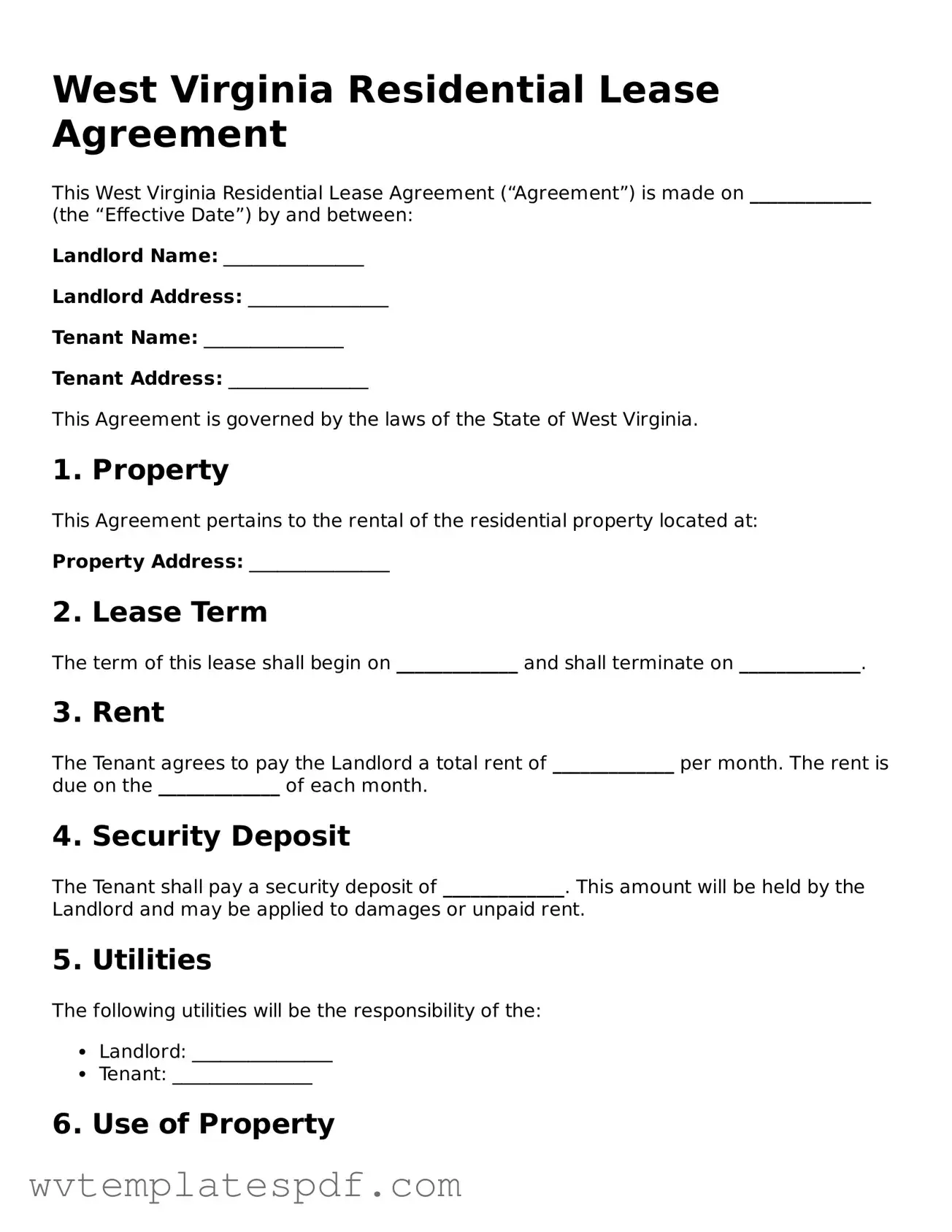Filling out the West Virginia Residential Lease Agreement form can be straightforward, but many people make common mistakes that can lead to confusion or disputes later on. One frequent error is not including the full names of all tenants. It's important to list every person who will be living in the rental unit. This ensures that everyone is legally protected under the lease.
Another mistake is failing to provide accurate rental payment details. Rent amounts should be clearly stated, along with the due date and acceptable payment methods. Omitting this information can lead to misunderstandings between landlords and tenants.
Some individuals forget to specify the lease term. Whether it's a month-to-month agreement or a fixed term, clarity is crucial. Without this information, both parties may have different expectations about the duration of the lease.
Not including maintenance responsibilities is another common oversight. The lease should outline who is responsible for repairs and maintenance. This prevents disputes over who should handle issues like plumbing or electrical problems.
People often neglect to read the entire lease before signing. It's essential to understand all terms and conditions. A tenant should never sign a document without knowing what they are agreeing to.
Another mistake is leaving out details about security deposits. The lease should specify the amount, conditions for its return, and how it will be held. This protects both the landlord and the tenant.
Some tenants fail to clarify pet policies. If pets are allowed or not, this should be clearly stated in the lease. Confusion over pet policies can lead to problems down the line.
Not including a clause for early termination can also be problematic. Life changes happen, and having a clear understanding of the terms for breaking the lease can save both parties a lot of trouble.
Lastly, people sometimes overlook the importance of including the landlord's contact information. This ensures that tenants know how to reach the landlord for any issues that may arise during the lease term.
By avoiding these common mistakes, both landlords and tenants can create a more positive rental experience. Careful attention to detail in the lease agreement is key to a successful landlord-tenant relationship.
